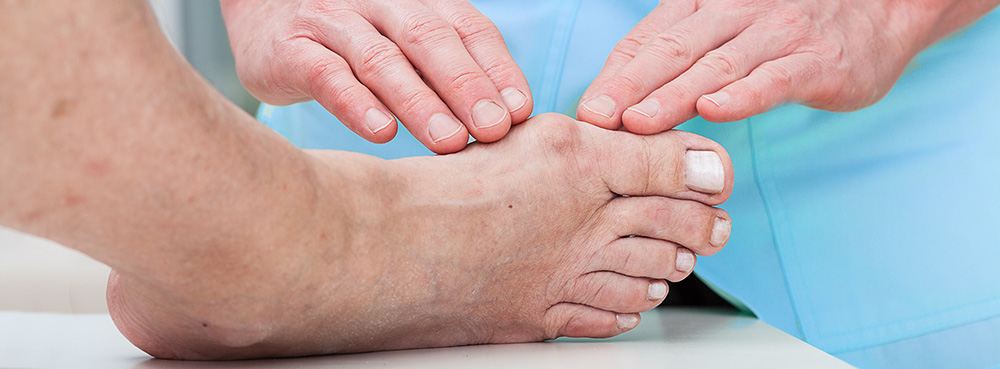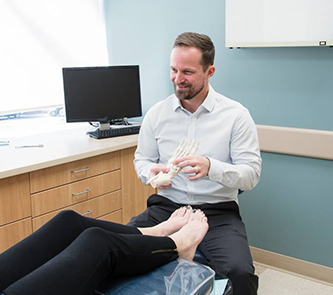Bunion Treatments
Of all the foot conditions out there, bunions might have the most stigma attached to them. When most people think of who might have a bunion, they’ll more than likely imagine a woman who has crammed her feet into too many pairs of tight heels over the years. This isn’t always the case, though!
While it’s true that most bunions are found in women, men are not immune from them, either. They can even begin developing in young people before “high heel age” is even reached!
What is a Bunion, and What Causes One?
A bunion starts to form when the joint at the base of your big toe starts to shift out of its proper alignment.
The big toe begins to push against its neighboring toe, and the joint is forced to the side. This causes that infamous “bony bump” that sometimes grows larger as well.
In addition to the protrusion, there is often also swelling, pain, and soreness at the site. Corns and calluses can also develop where the toes rub against each other or the bunion rubs against the inside of your shoe.
There has been a good deal of debate over what exactly causes bunions to form. Some foot structures, often passed down within families, are more likely to develop bunions than others. This is how many cases of juvenile bunions might form in younger patients, but it can still set many others up for bunions later in life, too.
Other risk factors for bunion development include rheumatoid arthritis and injuries to the big toe joint. Weakening the integrity of the joint might make it more likely to shift.
Bunion Surgery is NOT Always the Only Option

A bunion is a structural deformity, so it’s never going to go away on its own. It’s like expecting your creaky front door to just stop creaking someday!
But it also doesn’t mean that surgery is the only way to take care of a bunion, either. If conservative treatments can bring relief to bunion pain and help keep a bunion from getting worse, they will often be utilized first. Most times, it is considered the better option.
Conservative treatments that may be available for a bunion include:
- Orthotic devices to help support the joint and redirect pressure away from it. These may be custom-made or over-the-counter, depending on the situation.
- Protective padding to be used within shoes to ease friction and pressure points against shoes, reducing inflammation and the buildup of corns and calluses.
- Exercises to build and maintain joint mobility and strength. This is especially helpful if arthritis is also in the picture.
If these types of treatment don’t provide the results we are looking for, or if the bunion is simply too large, misaligned, or painful to make conservative treatments useful, then bunion surgery may be considered.
There are many different forms of bunion surgery, including shaving the bone, removing pieces of the bone, and fusing the joint. The style of surgery that would be of best benefit will depend on the shape of the bunion as well as the patient’s age and lifestyle.
No matter how long you have had a bunion, there are treatments that are likely to help you maintain mobility, keep the condition from progressing, and just plain feel better when you’re walking about. Faithfully serving Exter, Newfields, Hampton, and the rest of New Hampshire, schedule an appointment with one of our foot and ankle specialists by simply contacting our offices in Portsmouth or Nashua by calling (603) 431-6070 or filling out our online form.
Pay Your Bill
Make a payment online through our payment portal or Care Credit!
Portsmouth Office
14 Manchester Square, Suite 250
Portsmouth, NH 03801
Nashua Office
17 Riverside Street, Suite 205
Nashua, NH 03062
Website Hosted by SC Digital



